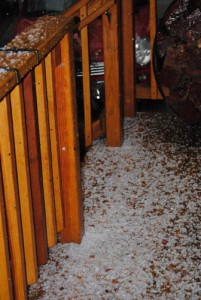
But the plentiful rain may not continue. The National Oceanic and Atmospheric Administration’s Climate Prediction Center (CPC) forecasters recently changed its La Ninã Watch to a La Niña Advisory.
The agency is predicting that La Niña conditions are likely to return this fall and winter. Although the forecast data are not very strong, according to CPC’s September report, this is the greatest likelihood for short-term climatic conditions.
“Collectively, these oceanic and atmospheric patterns reflect the return of La Niña conditions The better model performance, combined with the historical tendency for significant La Niña episodes (as in 2010-11) to be followed by relatively weaker La Niña episodes, leads to increased confidence that La Niña will persist into the winter,” wrote the report’s authors.
“While it is not yet clear what the ultimate strength of this La Niña will be, La Niña conditions have returned and are expected to gradually strengthen and continue into the Northern Hemisphere winter 2011-12.”
The most recent forecasts for winter 2011-12 indicated a below average likelihood of precipitation for Southern California, according to the CPC. The agency will issue its official winter outlook in mid-October, but La Niña winters often see drier than normal conditions across the southern tier of the United States and wetter than normal conditions in the Pacific Northwest and Ohio Valley.
Since 1946, the average rainfall through Sept. 30 has been 2.4 inches, which hasn’t happened in Idyllwild since 2004.
In 2010, the Idyllwild Fire Station had recorded only .1 inch of rain by Sept. 16 and only .29 inch by Sept. 16, 2009. Despite the dry summer and early fall, total rain (July 1, 2010 through June 30, 2011) was nearly 29.4 inches, or 14.4 percent more than the long- term average.













